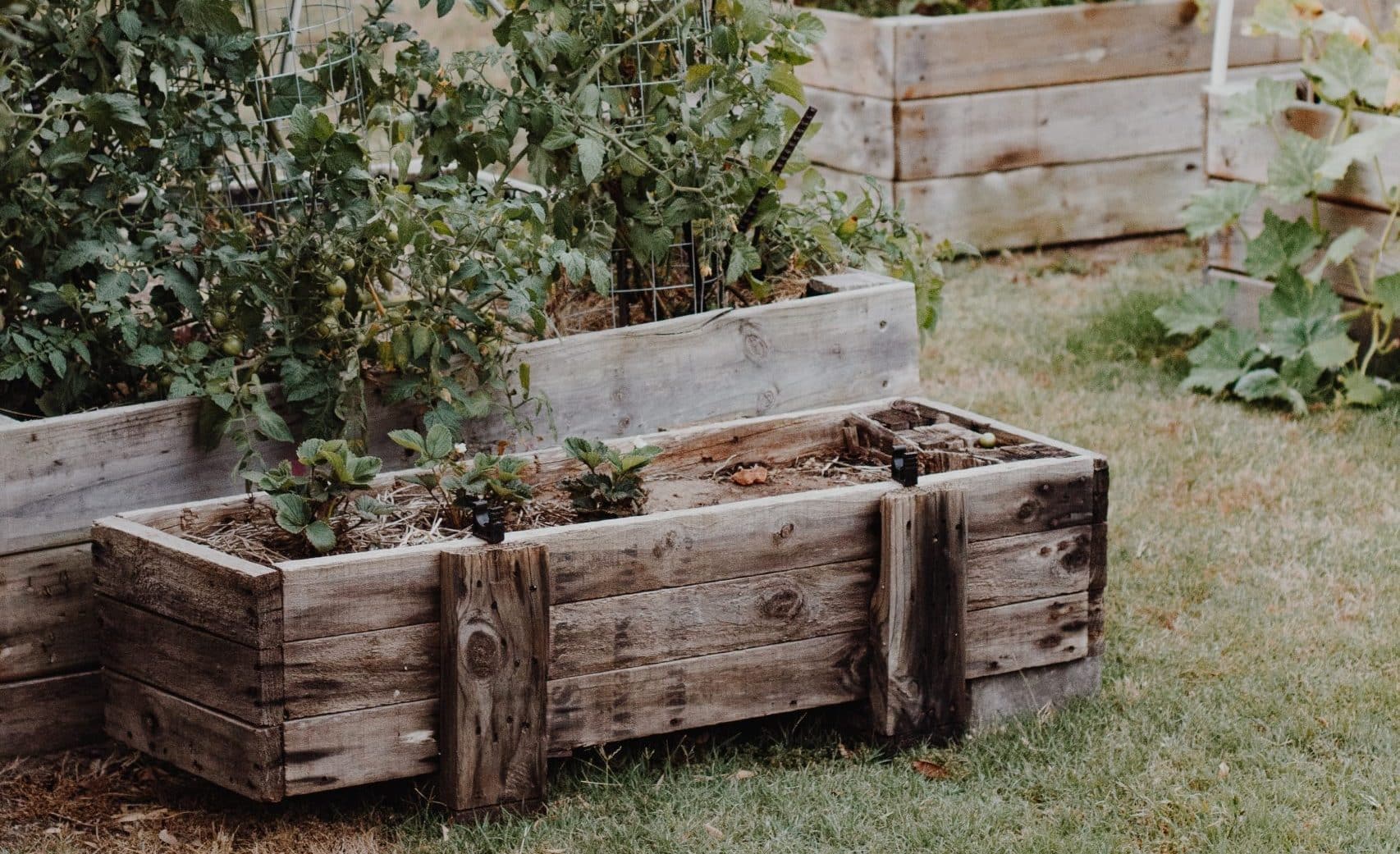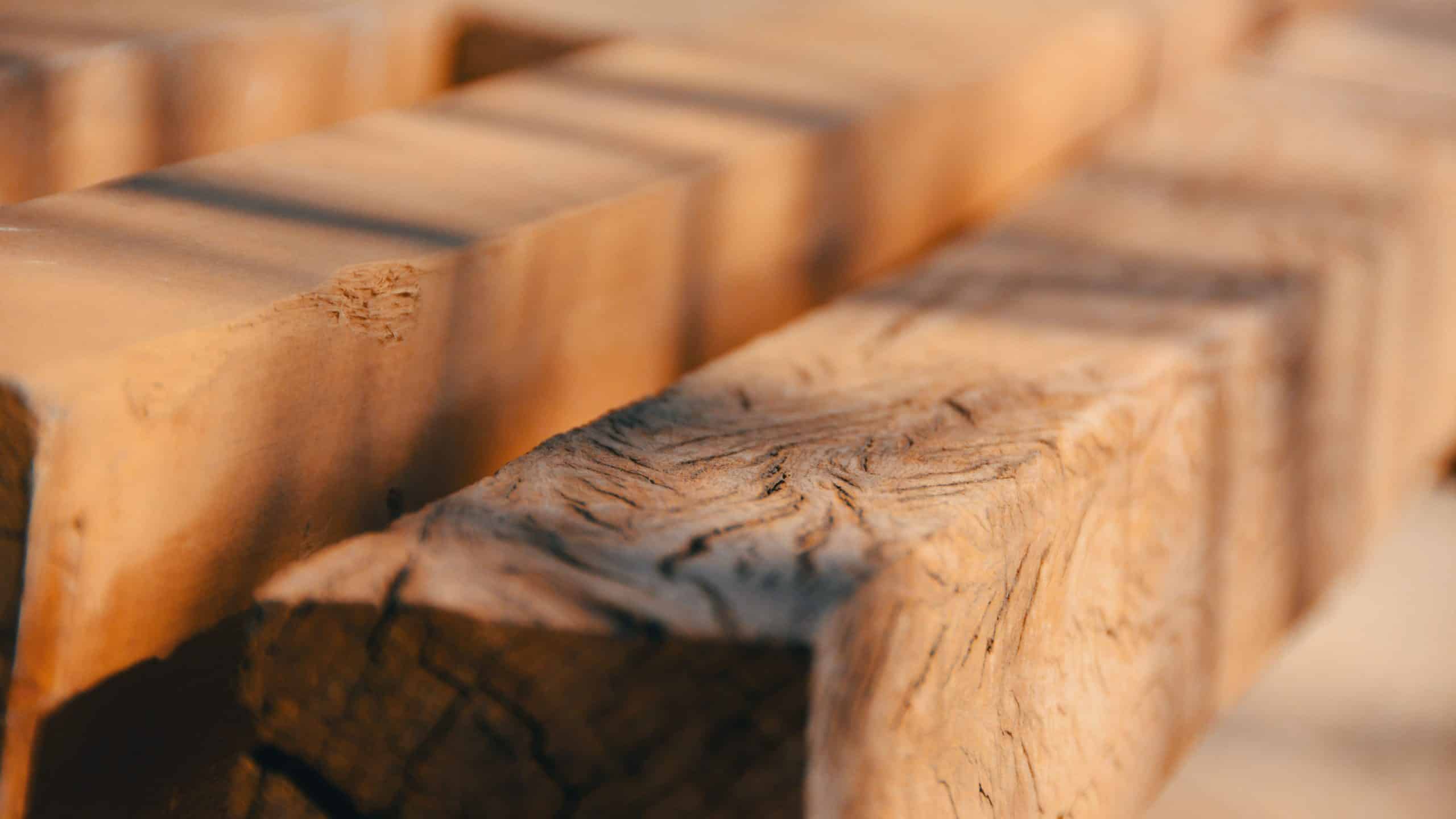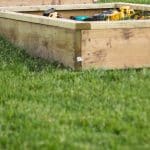Table of Contents
Are you weighing the pros and cons of using pressure treated wood for your garden? Good news, you’re not alone. On one hand, pressure-treated wood is tough as nails, lasting longer. But on the other hand, there are whispers about it not playing nice with your garden veggies. So, let’s break it down for you.
Get this, you can use pressure treated wood for your garden boxes… but not all pressure-treated wood is created equal. You wouldn’t want to use lumber treated with arsenic compounds for your garden boxes.
Composition of Pressure Treated Lumber
Basic pressure-treated lumber is like nature’s perfect blend of good and bad, with the bad in this instance being the chemicals used for preservation. These chemicals ward off the critters, but planting too close to the lumber walls may cause them to leach into your soil.
Role of Arsenic Compounds
Wood treated with CCA, or chromated copper arsenate, displays an unfortunate trait – it can leach arsenic, and let’s be honest, arsenic isn’t exactly a secret ingredient in any healthy salad dressing recipe. That’s why the recommendation is to avoid this lumber type for raised garden beds and save it for construction work.
Importance of Copper-Based Preservatives
According to some reports copper-based preservatives are becoming popular with the likes of Copper Azole, Micronized Copper Quaternary, and Alkaline Copper Quaternary being the most commonly used. Unlike the arsenic-based treatments, copper-based ones are less toxic and essentially a superhero for your garden.
Basic pressure-treated lumber is like nature’s perfect blend of good and bad, with the bad in this instance being the chemicals used for preservation. These chemicals ward off the critters, but planting too close to the lumber walls may cause them to leach into your soil.

Safety Concerns of Pressure Treated Wood
So, safety concerns with pressure-treated wood have been swirling around like a rogue tornado in a farm town. This is because they are widely associated with toxic chemicals. However, the right pressure-treated wood, used wisely, could be great for your garden.
Utilizing Pressure Treated Wood in Gardening Applications
The question now boils down to usability. So, if there was a pressure-treated wood Oscars, who’d get the best supporting role? It’s like placing bets on a horse race, and let me tell you, it seems like the copper-based preservatives are galloping ahead.
Raised garden beds made from this treated wood have been successful in creating flourishing gardens across various climates. In fact, when built right, it’s the gardening equivalent of having your cake and eating it too. Keep in mind, the key word here is ‘right.’ After all, no one wants an action flick with all bang and no plot.
Suitability of Pressure Treated Wood for Raised Garden Bed Construction
Constructed garden boxes from pressure treated wood yells practical. With a knack for resisting weather, these bad boys answer to growing vegetables and sustaining plant life all year long. The treated wood got a makeover, folks. They’ve been scrubbed real clean of arsenic compounds and replaced CCA with copper-based preservatives. Now ain’t that a step in the right direction.
Word has it there were actual cases of poisoning via pressure treated wood. Haunts me just thinking about it. Yet no concrete evidence, let alone circumstantial evidence of soil contamination to warrant a market recall. If this sounds dystopian, consider an alternative like cedar and redwood that have the Forest Stewardship Council seal of approval. End of the day, for us small-scale garden lovers, weighing out the pros and cons can take us a long way.

Best Practices for Building Your Garden Boxes With Treated Lumber
Got a level, a square, and a drill? That’s the ticket you need to board the DIY train. With treated lumber and these trusty tools, sprucing up your backyard with raised garden beds is as easy as pie. Follow the guidelines and sneak in a top layer of landscaping fabric. This keeps the soil and treated wood from mixing like vinegar and oil. Remember, stick to the script and reap the rewards.
Constructing a Stylish Raised Garden Bed
Listen, getting yourself a good looking raised garden bed ain’t some grand challenge. But it does need a pinch of patience and heap of elbow grease. Ingredients: straight, rot-resistant western red cedar – about 16 1″ x 8″ x 8′. Come away with swanky square beds and make your neighbors green with garden envy.
Mister fancy pants with extra budget in the back room can veer off script. Opt for finer finishes or consider adding on a trellis for a decadently twirling vine spectacle. Regardless, the beauty is in getting your hands dirty, and relishing in your self-made green heart in the middle of concrete chaos.
Tips for Vegetable Gardening With Treated Lumber
- Tread the treated lumber line carefully: Using wood treated with chemical preservatives can feel like walking on a tightrope over a starting pistol. Your extension service can balance out the risks and benefits, so schedule a friendly visit.
- Size it up right: Bigger ain’t always better, especially when dealing with garden beds. Heaps of unattended soil can become a breeding ground for insects.
- Go organic: Keeping it natural always heals the soil, promotes plant growth, and is just oh-so satisfying.
- Location: Positioning is key. Sunlit, easily accessible, and close to a water source – the trifecta.
- Get down & dirty: Soil prep done right before planting guarantees a smoother vegetable gardening ride.

Factors to Consider Before Using Pressure Treated Wood for Garden Boxes
But hey, don’t jump the gun and buy that bundle of treated lumber just yet. There are factors to consider before using pressure treated wood for garden boxes. It’s like scoping out the neighbourhood before moving in.
Chemical Composition
No one wants a mouthful of chemicals, right? The first box to tick off when considering pressure treated wood for your garden boxes is its chemical composition. Newbies should know that pressure treated wood is just regular wood that has been given a chemical bath to increase its durability and resistance to rot and invasion from those pesky insects. But not all chemical treatments are the same, and some are more suited for residential applications, so you gotta do your homework.
Leaching Capability
When it comes to pressure treated wood, one thing a fella can never skip straight past is the leaching potential. “Leaching” here, ain’t like Grandma’s tea, folks – it refers to those chemical compounds that may wriggle free from the coils of the wood and find themselves seeping into the surrounding soil. We’re mostly talkin’ about metals – copper and its cousins.
Type of Plants
While metals ain’t exactly a gardener’s best friend, not all plant life gets bothered the same way. Just like some folks can drink milk straight out of the cow, while others get their insides doing the twist. Root veggies like carrots and potatoes are more likely to absorb metals than, say, a marigold or a tomato plant. And then, there’s lower plant life like algae – those little boogers don’t much care for the preservatives in pressure treated wood. So longer story short, what you’re planting matters as much as the sides of the bed you’re putting them in.
Usage Duration
One of those less-thought-about aspects of using pressure treated wood for your garden boxes is working out how long they’re gonna stand the test of time. A good, sturdy box made from treated lumber can hold its own for a solid decade or more, climate allowing. But remember, the longer it’s out in the elements, the more those preservatives may optionally decide to play wanderlust and move out into the soil.
Drainage
Another part of the equation in this garden-box theatre is the audience – or in this case, the drainage. Good drainage helps the garden, but hey, too much and you might just be giving those preservatives an express ticket to Leachville. Balance, much like a tightrope walker, is key here.
Local Regulation
Lastly, and we can’t stress this enough folks – make sure you’re up to speed with your local regulations. Depending on where you lay your hat, local authorities might have very specific dos and don’ts about using pressure treated wood, especially in gardening. The last thing you wanna do is build a perfect box, only to have Mr. Regulation come knocking on your door with a violation notice in hand.
Final Thoughts
To close this chapter, let’s remember that pressure-treated wood for raised beds has its pros and cons. The negatives rest in the safety concerns, mainly thanks to Arsenic, and Copper. They do a good job at preserving your lumber from rot and insects but are a bit too nosy when it comes to your garden soil.
Constructing raised garden beds using this type of wood can be an attractive, cost-effective alternative to cedar. But it’s the potential risks from garden uses of CCA-treated lumber that cause the dilemma, making one ponder about having them so close to our veggies and flowers.
Therefore, whether you choose juniper or cypress as an alternative, remember, it’s all about being warier of what you use, how it affects your garden soil, and ultimately, the integrity of your veggies. So before you invest that time, energy, and well-spent sweat into constructing raised garden beds, be sure to know your materials.

I’m John, a “seasoned citizen” and an avid gardener. I live in Minnesota, where our weather and growing conditions can be harsh and challenging. Over the years, I have learned a thing or two about being successful in growing things. I have curated these tips, which I think are helpful for the beginning gardener and the seasoned experts. If you have feedback, let me know in the contact form.




